- Category: Articles
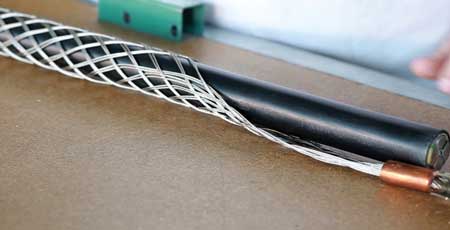 Cable Stocking with Self-Extinguishing Plastic Coating
Cable Stocking with Self-Extinguishing Plastic Coating
According to power reports, with its 50,018MW of generated wind energy Germany is Europe’s leader of installed wind power plants. By the end of 2016, a total of 28,217 wind power plants supplied 12.3% of the power produced in Germany. However, although there is an increasing number of new installations, the applied technology still has its weak points. For example, recurrent fires cause significant damage and even personal injury. Fires may arise as a result of short circuits and flying sparks caused by worn-out cable insulations inside the narrow generator houses.
By Hans Benkert, CEO, rupi-Cologne, Germany
- Category: Articles
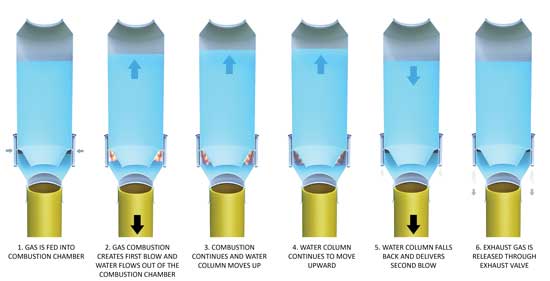 The BLUE 25M Hammer
The BLUE 25M Hammer
In recent years the offshore wind industry has gained an increased awareness of the detrimental effects of underwater noise caused by pile driving. This has resulted in the need for noise mitigation measures and legislation to reduce the negative effects of foundation installation. All across Europe this legislation is getting stricter. In Germany, where the legislation is strictest, up to 40 million euros are spent per wind farm to reduce the effects of underwater noise. Fistuca BV is currently building a hammer, the BLUE 25M, that can compete with the largest hydraulic hammers in the industry, which tackles the noise issue at the source.
By Jasper Winkes, Fistuca BV, The Netherlands
- Category: Articles
Performance Evaluation Strategies Based on Raw Data
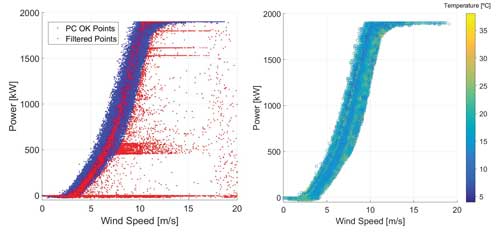 Identifying a change in the performance of a wind turbine generator (WTG) using the raw SCADA data may not be a simple task, particularly because the variability of the 10-minute values during normal operation is quite wide. This article presents four methods to evaluate the performance of WTGs over time using power, wind speed and ambient temperature SCADA measurements. We named these methods ‘Power Residuals’, ‘Health Value -PC2 Dev’, ‘Quantiles’ and ‘Power Curves Evolution’, and in each we calculate a key performance indicator (KPI). These KPIs can be useful to identify changes or trends in the operation of the turbines, assess an improvement in the performance of the WTG after maintenance is done and help in the detection and prevention of possible failures in components which are directly related to the performance of the turbines (e.g. anemometers). An algorithm to automatically identify the changes in the KPIs is also presented.
Identifying a change in the performance of a wind turbine generator (WTG) using the raw SCADA data may not be a simple task, particularly because the variability of the 10-minute values during normal operation is quite wide. This article presents four methods to evaluate the performance of WTGs over time using power, wind speed and ambient temperature SCADA measurements. We named these methods ‘Power Residuals’, ‘Health Value -PC2 Dev’, ‘Quantiles’ and ‘Power Curves Evolution’, and in each we calculate a key performance indicator (KPI). These KPIs can be useful to identify changes or trends in the operation of the turbines, assess an improvement in the performance of the WTG after maintenance is done and help in the detection and prevention of possible failures in components which are directly related to the performance of the turbines (e.g. anemometers). An algorithm to automatically identify the changes in the KPIs is also presented.
By Andres Guggeri, Martín Draper, Alvaro Díaz and Vasilii Netesov, Ventus, Uruguay
- Category: Articles
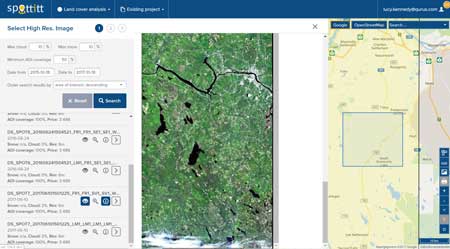 An Online Application to Remotely Select Wind Farm Sites with Suitable Geography
An Online Application to Remotely Select Wind Farm Sites with Suitable Geography
Spottitt is an online application that can seamlessly search and access up-to-date satellite imagery and data in order to perform industry-standard analyses that are currently executed manually. This article describes how Spottitt works and also outlines the advantages derived from the use of fully automated on-demand satellite image and data analyses, in terms of saving time and money, as well as minimising errors and human intervention.
By Marcello Deplano, CMO, Spottitt, UK
- Category: Articles
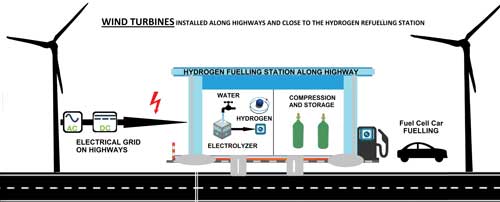 GIS Shows Us How Many Could Be Realised
GIS Shows Us How Many Could Be Realised
For a hydrogen economy, hydrogen refuelling stations will be needed to provide fuel for vehicles. This could easily be done by retrofitting existing fuel stations. Some of these are located away from urban centres or outside populated areas. On-site wind-powered water electrolysis is a potential solution. The advantage is cost allocation, due to integration of systems with current infrastructures and effective use of energy. In order to estimate the potential of this application, GIS could be used to give us an answer on which to base further system developments. Maps containing road networks, land, wind and station data could be layered and analysed. At TU Delft, Professor Ad van Wijk and PhD student Nikolaos Chrysochoidis-Antsos are working on developing these maps and alternative wind-powered hydrogen production and refuelling concepts.
By Nikolaos Chrysochoidis-Antsos, Technical University of Delft, The Netherlands
- Category: Articles
Providing Quality Assurance Over the Lifetime
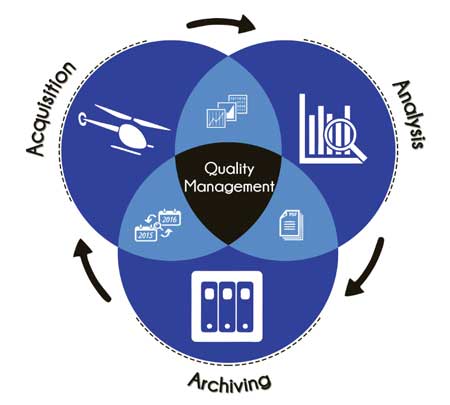 The standard inspection method for quality assurance of the exterior surfaces of wind turbines is to employ people trained as rope access or industrial climbers. But this is not the only way. This article, by Robert Hörmann of Aero Enterprise in Austria, outlines (using his company’s products) how drones can undertake visual inspection of turbines, and then supporting software and archiving can be used to analyse the data. As the author admits, drones and airborne access will never be a complete substitute for manned inspection, and there will always be the need for rope access workers, but he shows that there are many advantages to drone-based inspection together with software analysis and archiving.
The standard inspection method for quality assurance of the exterior surfaces of wind turbines is to employ people trained as rope access or industrial climbers. But this is not the only way. This article, by Robert Hörmann of Aero Enterprise in Austria, outlines (using his company’s products) how drones can undertake visual inspection of turbines, and then supporting software and archiving can be used to analyse the data. As the author admits, drones and airborne access will never be a complete substitute for manned inspection, and there will always be the need for rope access workers, but he shows that there are many advantages to drone-based inspection together with software analysis and archiving.
By Robert Hörmann, CEO/CTO and Founder of Aero Enterprise, Austria
- Category: Articles
Towards a Significant CoE Reduction
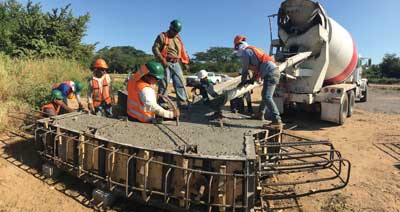 The auction system is leading to reductions in the price of energy worldwide. At present every competitor involved in the sector is focusing on maximising energy production while trying to minimise the investment needed for this purpose. One of the trends is the use of higher towers and more powerful turbines. This leads to an increase of foundation loads, and hence higher volumes of concrete on regular shallow slab foundations. Nowadays values around 400–450 cubic metres of concrete per wind turbine generator (WTG) foundation are common and therefore efforts are being made to reduce both this concrete volume and the amount of reinforcing steel in the WTG foundations. So far, most of the innovative solutions have not had a significant penetration into the market since although there were material savings there were also much higher execution costs as well as longer construction schedules.
The auction system is leading to reductions in the price of energy worldwide. At present every competitor involved in the sector is focusing on maximising energy production while trying to minimise the investment needed for this purpose. One of the trends is the use of higher towers and more powerful turbines. This leads to an increase of foundation loads, and hence higher volumes of concrete on regular shallow slab foundations. Nowadays values around 400–450 cubic metres of concrete per wind turbine generator (WTG) foundation are common and therefore efforts are being made to reduce both this concrete volume and the amount of reinforcing steel in the WTG foundations. So far, most of the innovative solutions have not had a significant penetration into the market since although there were material savings there were also much higher execution costs as well as longer construction schedules.
By Ramón López Mendizabal, Esteyco Energía, Spain










